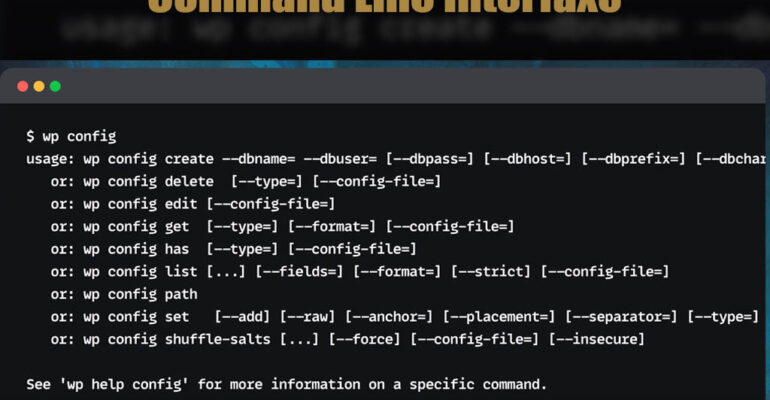Optimizing Your Workflow with WP-CLI Commands
Optimizing Your Workflow with WP-CLI Commands
WordPress has come a long way from its humble beginnings as a simple blogging platform. Today, it powers a significant portion of the internet, and with that growth comes the need for efficient management tools. Enter WP-CLI, a command-line interface for WordPress that empowers developers and administrators to interact with their WordPress sites in a more streamlined and powerful way.
Getting Started with WP-CLI
Installation and Setup
WP-CLI is easy to install. With a simple command, you can have it up and running on your system. Ensure your system meets the requirements and run the installation command:
wp cli install
Once installed, verify it by running:
wp --info
Navigating the WordPress Directory
Understanding the Structure
Navigating through your WordPress site’s directory becomes a breeze with WP-CLI. Use the cd command to move between folders, and ls to list the contents:
wp theme cd my-theme
wp plugin ls
Managing Plugins via WP-CLI
Installation and Activation
Take control of your plugins effortlessly. Install a plugin with:
wp plugin install plugin-name
Activate it using:
wp plugin activate plugin-name
Theme Management with WP-CLI
Switching Themes
Change your theme with a simple command:
wp theme activate new-theme
Database Operations
Backup and Restore
WP-CLI allows you to safeguard your data easily. Back up your database:
wp db export
Restore it when needed:
wp db import backup-file.sql
User and Role Management
Creating and Modifying Users
Manage users seamlessly. Create a new user:
wp user create username [email protected] --role=editor
Update a user’s information:
wp user update user-id --display_name="New Name"
Post and Page Management
Creating and Deleting Content
Content management becomes efficient. Create a new post:
wp post create --post_title="New Post" --post_content="Content here"
Delete a post with:
wp post delete post-id
Customizing Settings through WP-CLI
Configuring Site Options
Adjusting your site settings is just a command away:
wp option update siteurl "http://new-url.com"
Troubleshooting and Debugging
Checking Error Logs
Quickly identify issues with:
wp debug log
Automation and Scripting
Writing Custom Scripts
Automate tasks with scripts. Create a script file and run:
wp eval-file script-file.php
Version Control Integration
Managing Changes Efficiently
Integrate WP-CLI with version control. Track changes and updates:
bashCopy code
wp post create --post_title="New Post" --post_content="Content here" --porcelain
Security Best Practices
Enhancing WordPress Security
Secure your site with WP-CLI. Update keys and salts:
wp config shuffle-salts
Performance Optimization
Leveraging WP-CLI for Speed
Optimize performance effortlessly:
wp cache flush
Conclusion
WP-CLI commands unlock a world of possibilities for WordPress users. From simple tasks like theme switching to complex database operations, WP-CLI streamlines the management of your WordPress site. Embrace the power of the command line and take your WordPress experience to the next level.
Frequently Asked Questions
- Is WP-CLI suitable for beginners?
- Absolutely! While it may seem intimidating at first, WP-CLI simplifies many tasks and is well-documented for users at all levels.
- Can I undo changes made with WP-CLI?
- Yes, most actions performed with WP-CLI can be reversed or undone. Always back up your data before making significant changes.
- Are there any risks associated with using WP-CLI?
- When used responsibly, WP-CLI is a powerful tool without significant risks. However, always exercise caution, especially when dealing with commands that modify or delete data.
- How frequently should I update WP-CLI?
- It’s advisable to stay updated with the latest version of WP-CLI to benefit from new features and security patches. Check for updates regularly.
- Can WP-CLI be used on shared hosting?
- In most cases, yes. However, some hosting providers may have limitations. Consult with your hosting support or documentation for compatibility.
Read more about WP-CLI -> WP Developer Documentation

